- Home
- Will Hobbs
Take Me to the River Page 7
Take Me to the River Read online
Page 7
“We can give you a little food,” Rio said. “What else can we do for you?”
Carlos ran his hand over the stubble on his chin and up the side of his face. “If the boy was in better shape, you could take us across the river, but the highway and the railroad are not close—am I right?”
“Sixty or seventy miles north.”
“I could never drag this kid that far without killing him. His mother wouldn’t appreciate that, eh, Diego?”
The boy was done eating and was licking his fingers. He didn’t acknowledge that he’d been spoken to.
“Bad attitude,” Carlos sneered. “Look, amigos, even my maps were stolen. If I could look at yours, I could figure out what to do next.”
“No problem,” Rio said, “but it only shows the river and about fifteen miles on either side.” He went to the raft to fetch the guidebook.
Carlos turned to me. “The weather is changing.”
“Maybe a tropical storm,” I said. “We heard that a hurricane was heading for the Gulf Coast of Texas. Maybe it already came ashore.”
Carlos looked at the clouds racing in. They were about to blot out the sun. “You think this is it?”
“We hope not, but maybe it is.”
Rio returned to the table, closed the lid of the Coleman stove, and placed the guidebook on it. He opened it to the first map, and Carlos stepped close. Rio pointed out the Hallie Stillwell Bridge and the roads—the dirt one heading south to Melchor Múzquiz and the paved one north to Marathon.
I sat down next to the boy. Diego had his head down, and was attempting to pull something from the back of one hand with his fingernails. I leaned over to see what it was. A tiny cactus needle. Now that I looked, I saw them all over his hands and his forearms. “Do those hurt?” I whispered.
He grimaced. I took that for a yes. Diego’s lips were badly chapped. I offered my spare lip balm and he took it. I went to the raft and returned with the first aid kit. The cut on his head was infected, and some of his scratches soon would be if they weren’t already.
As Rio and Carlos talked about the map, I swabbed the cut with alcohol wipes. Diego winced but appeared grateful. I applied antibiotic ointment and a square Band-Aid that looked like it was going to stay put. Catclaw mesquite or something similar accounted for the cut and the scratches, but I was suspicious about the black eye and the bruised cheek.
Only with tweezers was I was able to pull the tiny cactus needles from Diego’s hands and arms. It was a laborious process; there were hundreds of them. “I like your soccer jersey,” I whispered as I worked. “Do you like soccer, Diego?”
He nodded mournfully. He knew the word soccer, as I’d guessed. Evidently he understood English; he might even be able to speak it. Why he wouldn’t was painfully obvious. He was afraid. He’d been ordered to play dumb.
“Here we are at Mile 17,” Rio was saying to the coyote. “Look, no roads on the Mexican side, but across the river, in the wildlife area, there’s a four-wheel-drive road. If you followed that north and west, it would eventually lead you to the paved road to Marathon. With food, you could do it, not that I’m recommending it.”
Carlos frowned. “Find me the next road down the river that goes south into Mexico.”
“You’re going to go back and try again?”
“I’m going to quit on this job—take the brat back to his grandmother in Torreón.”
“Okay, let’s take a look.”
Rio and Carlos studied the maps and read the text on the opposite pages. The country was so wild and so rugged, they found no roads close to our present position, none on the Mexican side until San Rosendo Canyon, between Miles 40 and 41. Rio read the text about the primitive hot springs pools at the river there and a rough road leading twelve miles up San Rosendo Canyon to a ranch. The ranch was described as “one of the most remote in all of Mexico.”
“Only twenty-three miles from here to San Rosendo Canyon,” Carlos said.
“True, but thirteen of those are in a canyon that’s more than a thousand feet deep. You couldn’t walk to San Rosendo Canyon from here. It would be easier to walk the seventeen miles from here upstream to the bridge. From there you could walk on the road south to Múzquiz.”
“That would take a week!”
“I guess it might. If it rains, and it looks like it will, you’ll find water. Do you want us to take you across the river instead, and try your luck walking to Marathon?”
“The boy would never make it. Take us on your raft to San Rosendo Canyon. Then we walk only twelve miles to that ranch to get help. They can drive us to town next time they go.”
Rio hesitated, which surprised me. I was expecting him to agree. “Sorry, señor,” he said. “I can’t be responsible. We have three life jackets counting our spare, and none will fit Diego. If the tropical storm hits us, and it looks like it’s going to, it might get really rough on the river.”
“Between here and this San Rosendo Canyon—I see this on the map— there are only two rapids, both Class 1. That sounds like the easiest, no?”
“That may be true—the big stuff starts with the rapid at San Rosendo Canyon—but all the same, I can’t be responsible. My cousin and I are on our own trip. Besides, you don’t know that there’s anybody home at that ranch twelve miles from the river. They might be there only part of the year, when they come to round up cattle.”
The Mexican’s forehead wrinkled around that angry scar. “You would abandon us?”
“We’ll give you canned food and we’ll even give you our tent. But no, I’m sorry, we can’t take you along.”
I had pulled as many cactus needles from Diego as I could. Some were too tiny for the tweezers to grab hold of. I used cotton balls and peroxide to clean up his face, arms, and hands. Both wrists had welts on them. When I finished, a tear dropped from his eye.
Rio and I packed quickly. We gave the man our canned meat and soup, a can opener, and a lighter. We gave them two milk jugs filled with clean water. And we gave them our tent.
We’d probably just saved their lives, but Carlos was far from grateful. His face was frozen with a scowl as we shoved off. The coyote looked like he wanted to murder us. The boy was streaming tears.
Chapter 13
Flossing with Cane
THE WIND BEGAN TO blow, and blow hard. As much as I wanted to talk to Rio about what had just happened, we had to row and paddle hard to keep from being blown upstream. The clouds were swirling and thickening by the minute. We went to shore at a small beach to put away our sunglasses and pull on our rain gear. I asked Rio what he thought of Carlos, if that’s what the coyote’s name really was. “Spookiest guy I ever met,” Rio said.
Rio suspected, same as me, that it was Carlos who had blackened Diego’s eye and bruised his face. The welts on the boy’s wrist, we figured, were from the man’s belt used as a leash. We could only hope that the coyote would return him to his grandmother.
As it was, we would never know Diego’s fate. It was all part of living on the border, Rio said. Every hour of every day there were desperate people moving through the desert. Most paid dearly to be guided by coyotes, who were quick to abandon them. Crossers were found dead every year. They died of heatstroke and hypothermia, of sickness and starvation. Some who survived, and some who didn’t, had been beaten and abused.
“Maybe we could have taken Diego with us,” I said, “and somehow got him back to his grandmother.”
Rio shook his head emphatically. “That would have meant taking Carlos along, at least as far as San Rosendo Canyon. Having that scumbag in my raft—that would give me the creeps.”
“Carlos should be grateful,” I said with an eye on the weather. “He even has our tent.”
“I only gave it to him on account of Diego.”
“I know, and I’m glad you did.”
“We’ll get by, but we need to be on the hunt for shelter, a rock overhang or something.”
Just then lightning began to fire, and the surrounding mount
ains rumbled with thunder. Downriver, the wind was blowing up whitecaps. I told Rio it was time to fish out the spray cover for the canoe before we went any farther.
“Looks like you’re going to need it,” he agreed. “A canoe makes a lousy submarine.”
We transferred most of the heavy stuff I was carrying over to the raft, including two of our three five-gallon water jugs. After making sure that the rest of my storage was tied into the thwarts spanning the canoe, we pulled the canoe’s spray cover out of its stuff bag. There were two separate pieces, the larger to cover the front half of the canoe and the smaller to cover the open space behind me. The seat and kneeling area, back of center, remained open to incoming waves, but it was the least likely location to take on water.
It was easy enough to spread the waterproof material over the gunwales, and to run the shock cord around the knobs on the outside of the hull. I made sure I had my bailer, boat sponge, and throw-bag handy. The spare paddle, too.
The clouds grew increasingly dark. Heavy rain wasn’t far off. The question now became . . . wait this out or stay on the river? We had a quick huddle and decided we should put some miles behind us in case this got truly serious.
We were ready for battle, and as we put back on the water, we had one on our hands. Rio had to pull hard against the wind to get into the current. The sky broke open with a deafening thunderclap, and a squall line of low clouds hit us with gusts of wind and sheets of rain. I got off the canoe seat and for the first time on the trip assumed the more stable kneeling position, knees spread wide. I’ve always liked wild weather and it looked like I was going to see some.
The rain kept coming. Another mile downstream, and we were approaching a large island. As always, Rio was out front with the raft, by far more stable than the canoe. It was up to him to pick the best channel for us to take around the island.
As he drifted closer, Rio stood up on his rowing seat to get a better look at his choices. I was guessing he was going to pick the channel around the right side of the island. There was much more water going that direction. Generally, the more water, the fewer rocks you have to dodge.
Rio sat back down and rowed toward the right channel. I followed him in, keeping enough space between us to allow for the faster drift of the canoe. In a tight channel we would have a real problem if I jammed him and he lost the use of an oar.
As I rounded a corner and was able to see farther downstream, I saw Rio beating the river to froth as he tried to avoid a nasty hazard along the shore. The cane there, thick as a bamboo forest, was bending far into the river, right down to the waterline. As hard as Rio was rowing, it didn’t look like he was going to be able to keep the raft from running headlong into it. The current was pulling him full bore into the overhanging cane.
I had to bear down. I would capsize for sure if the current swept me under the cane.
As I paddled toward the ribbon of safe water between the shore of the island and the powerful current surging into the cane, I glanced to the right through the pouring rain. Rio’s raft ran smack into the overhanging wall of cane grass. At the moment his hands flew up to protect his face, he got broomed overboard.
Focus, I told myself. This is bad, really bad.
By now I was passing the raft by. It had been arrested in place, with only its stern showing and no sign of Rio. I failed to catch even a glimpse of his orange life jacket. I could only guess that he was hidden under the cane.
Our best shot, I figured, was for me to get downstream and catch him when he got flushed out. I raced another fifty yards to the foot of the island and paddled into the eddy on the right-hand side. The eddy water rushing upstream allowed me to hold my position below the downstream end of the overhanging cane. Still no Rio.
His straw hat floated by. I reached out and grabbed it.
I held my breath, fearing the worst. Finally, finally, the cane spit him out, just upstream from where I was waiting. His face had taken a thrashing.
My cousin was mighty happy to spot me, and vice versa. No need for the throw-rope. I intercepted him at the head of the eddy. He latched on to the grab-loop on the stern of the canoe and I towed him to the foot of the gravelly island.
Rio crawled out of the water all pumped up, running in place in the pouring rain. Not to keep warm; the river water wasn’t cold and neither was the rain. Just to burn off the excess adrenaline, I figured.
“Bad situation back there,” I said.
“I did it on purpose,” he shot back.
This was too preposterous to be believed. “Oh yeah,” I said, “what for?”
He bared his teeth. “I needed a good flossing, and I got one!”
I had a good laugh, and Rio admitted how embarrassed he was. He said he was “too slow on the draw,” which was true. If he had cocked the raft toward the cane and pulled hard to the left a few seconds earlier, he would have escaped the current.
I asked if he had ever capsized a canoe in overhanging cane. He held up three fingers. I asked if he thought the cane would let the raft go, and he said he figured it would, thanks to the rain. With a little more power behind it, the current would rip it loose.
An hour later, the raft was still in the grasp of the cane. We waited some more, and we lucked out. The rising river tore the raft loose, none the worse for the thrashing but strewn with cane.
Chapter 14
We’re in the Big-Time Now
WE MADE IT ANOTHER eight miles on rapidly rising water to a possible shelter pictured in the Lower Canyons guidebook. Twenty-seven miles below the put-in at the bridge, a rock house stood back from the river on the Texas side, maybe fifty feet above the elevation of the river. The one-room structure was a remnant of an old candelilla works, the mile-by-mile guide said. A nearby spring provided an optimum water supply, always clear and clean, for rendering the wax.
Before we walked up the slope to check out the rock house, we located the spring and filled our water jugs to the brim. From here on, the springs might be flooded out.
On our way up to the rock house we caught a good view of the scaly mountains on the Mexican side. Their tops were shrouded in clouds. We climbed a little higher and saw that our rock house lacked a roof. That was okay, we figured—our big blue tarp could do the job.
It didn’t work out. The inside of the building was choked with giant prickly pear cactus, their pads big as frying pans. The needles in the pads were as long as my little finger. Rio informed me that the pads were edible, if prepared correctly. “Uh, some other time,” I told him.
Two miles downriver, at Mile 29, we found a place to camp on the Texas side. The large grassy sandbar there stood ten feet above the river and looked like a safe bet. While we were unloading the boats, however, the river came up another six inches. If it rose another nine and a half feet and flooded the campsite, we would be out of luck. Behind the sandbar, the cactus- and ocotillo-studded slope was as steep as a playground slide.
We liked our chances. Rio had never seen the river rise nine feet overnight. Unless we were very unlucky we would be okay, but what were we going to do for a shelter?
Rio wasn’t worried. “No problem,” he said. “Let’s make like Comanches, and build ourselves a wickiup out of cane.”
“Ever built one before?”
“No, but I’ve seen pictures.”
Amid lightning and thunder and a new squall with pelting rain, we gathered cane. Our rescue knives borrowed from our life jackets went through the stalks like butter. “Ever seen this much water in the river?” I asked.
“It usually gets this high every summer.”
“So, you don’t think this is Dolly we’re looking at?”
“It could be just a West Texas toad strangler. My dad and I have had the raft out a couple of times on five thousand cubic feet per second. We aren’t looking at that much yet, but we’re getting close.”
“What’s the biggest flow you’ve ever heard of?”
“At the takeout below Santa Elena Canyon, on the outside
of one of the johns, the Park Service painted a black stripe to show the high-water mark from the summer of 1958. The mark is higher than the door.”
“How much water was it?”
A huge grin spread across his face. “Fifty-two thousand.”
Mindful of the wind, we made our shelter low to the ground, beginning with four forked sticks jammed waist high into the sand at the corners of a five-by-seven-foot rectangle. We laid sturdy cane stalks into the forks, framed the roof and the leaning walls with more stalks, spread our blue tarp over the frame, then covered the whole thing with layer upon layer of the grassy tops of the cane. We had ourselves a wickiup, with only a crawl hole open to the weather.
By five PM it was prematurely dark under the dense, black clouds. The lightning and thunder had backed off, but the rain kept coming. We inflated our ground pads and crawled into the shelter with a can of beans and an energy bar apiece, our second and last meal for the day.
It was snug in our shelter—not bad at all—and we got to talking. Rio asked me about a canoe stroke I’d been using, and where I learned it. I told him it was called the Canadian. They taught it at the canoe camp I had done twice with the Nantahala Outdoor Center. I waxed enthusiastic about the Nantahala River and its rapids, about the Great Smoky Mountains and the Blue Ridge and the town of Asheville. He said he would love to run a mountain river with forests right down to the water, and I said we had to make it happen one day.
By now it was nearly dark, and it had been raining all this while. We thought we’d better check on the boats, and it’s a good thing we did. The river was already lapping at the base of the salt cedars they were tied to. We carried the canoe up the slope and out of harm’s way, and used our seventy-five-foot rope to tie the raft to a boulder on the slope above.
On our way back to the shelter we came across two rattlesnakes displaced by the rising water. Scorpions, more than I cared to count, were scuttling for higher ground.

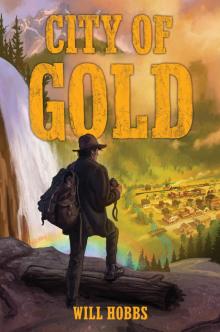 City of Gold
City of Gold Kokopelli's Flute
Kokopelli's Flute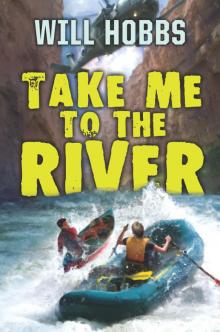 Take Me to the River
Take Me to the River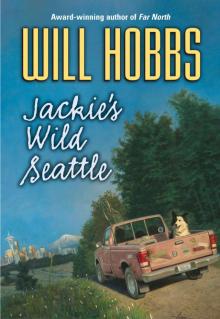 Jackie's Wild Seattle
Jackie's Wild Seattle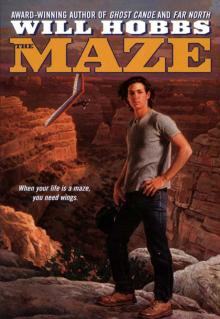 The Maze
The Maze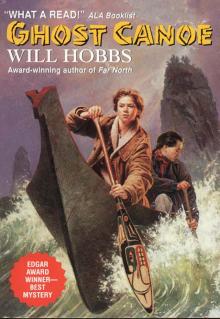 Ghost Canoe
Ghost Canoe Never Say Die
Never Say Die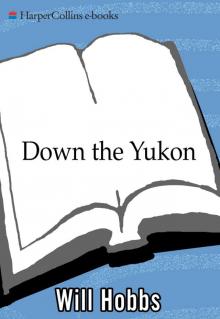 Down the Yukon
Down the Yukon Bearstone
Bearstone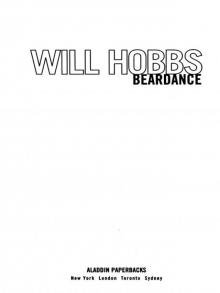 Beardance
Beardance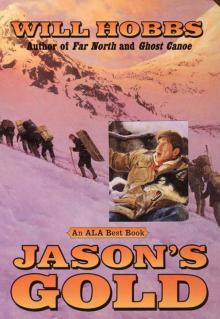 Jason's Gold
Jason's Gold Far North
Far North The Big Wander
The Big Wander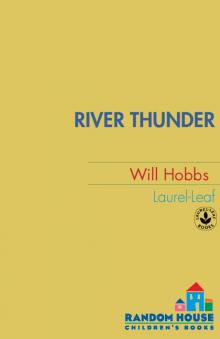 River Thunder
River Thunder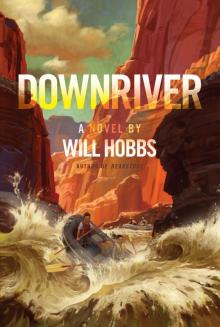 Downriver
Downriver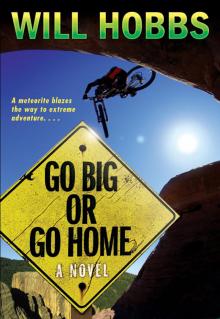 Go Big or Go Home
Go Big or Go Home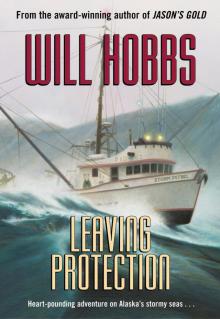 Leaving Protection
Leaving Protection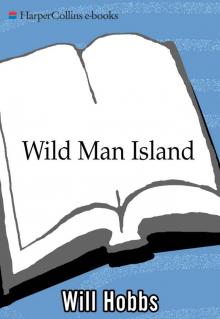 Wild Man Island
Wild Man Island